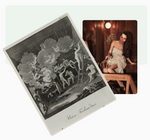What is KYFE ?
Pronounced "Kai-f": Arabic word meaning pleasurable, enjoyable, high on life feeling. This word is
often used in the Ukrainian/Russian language to describe post sauna euphoric effects.

Coming from Ukrainian immigrant families we have always been exposed to banya (sauna) culture from a young age.
Our parents and grandparents relied on hot/cold therapy for many medical reasons. They believed sauna could heal almost anything from a stuffy nose to arthritis, and for good reason. But of course, we did not always have the funds to build or purchase a permanent sauna. So for many years now, using a makeshift stick tent with a worn out, poorly welded steel furnace, our group of friends have been going out to the mountain rivers enjoying the intense heat and plunging into the freezing water.
Little did we know it would become our first prototype.
Giving Back
To honor our heritage and give back to the communities in need we are donating 10%
of all proceeds to Ukrainian orphanages and others affected by the war.
Banyas, or traditional Slavic bathhouses, are an integral part of Slavic culture. Since ancient times, the banya has been considered an important bonding place used by all social classes within slavic society, from villagers to royalty. Communal baths were very common in villages and towns, and are still currently used as social hangouts or as a place where business men and politicians meet. Traditionally, banya is not co ed. Women would gather together and chat about the newest gossip that week and men would hang out, talking about their day at work whilst playing cards and having tea in between sessions.
A traditional Slavic banya typically includes a steam room or dry sauna with wooden benches, leafy branches that are used for lymphatic massages, and buckets or pools of ice water to use as a cold plunge. In colder regions, instead of the cold plunge, people will often walk outside of the sauna and lie down in the snow. The leafy branches are typically birch cuttings tied together to form a bundle or venik. It is believed in slavic society that being whipped with a birch tree venik is beneficial to ones health. The light stress to your body encourages blood flow and in turn revitalizes the skins appearance, much like any other uncomfortable body scrub or lymphatic massage would. It also helps exfoliate the skin, removing dead skin cells.

History
Historical Origins: Apostle Andrew s Account of Slavic Bathhouses in
the Russian Primary Chronicle (1113)"

Slavic bathhouses have been around for centuries. The first banya mentioned in text, found in the medieval Russian Primary Chronicle of 1113, was written by Apostle Andrew when he visited the territories that were later to become Russia and Ukraine during his ministry to the Greek colonies on the Black Sea. He stated: "I saw the land of the Slavs, and while I was among them, I noticed their wooden bathhouses. They warm them to extreme heat, then undress, and after anointing themselves with tallow, they take young reeds and lash their bodies. They actually lash themselves so violently that they barely escape alive. Then they drench themselves with cold water, and thus are revived. They think nothing of doing this every day, and actually inflict such voluntary torture on themselves. They make of the act not a mere washing but a veritable torment" (Cross and Sherbowitz-Wetzor).
“The Russian Primary Chronicle" Laurentian Text Edited by Samuel Hazzard Cross. Translated by Olgerd P. Sherbowitz-Wetzor, Russian Primary Chronicle, 1930.















